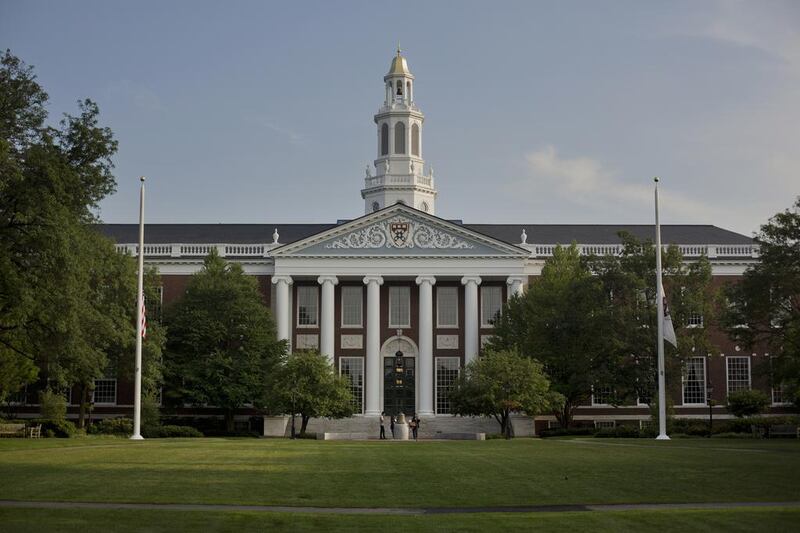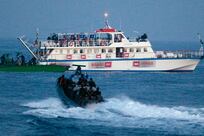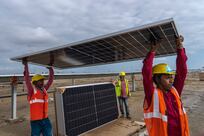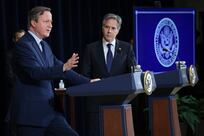Nearly a century ago, United States president Woodrow Wilson addressed a joint session of the US Congress and presented his vision for a postwar world.
Wilson proposed a general conference of nations that would prevent further conflict. He also inspired hope among emerging nationalist movements around the globe that their attempts to realise self-determination and independence from European empires would find support in Washington. To help turn his ambitious proposals into reality, Wilson turned to American academia for experts on the different and competing claims to be discussed at the Paris Peace Conference.
Yet in 1918 there was a dearth of knowledge about other parts of the world, even in America’s most prestigious universities.
With little contemporary expertise about the Middle East, then called “Western Asia”, the reports produced for Wilson by a group of academics known as the Inquiry often relied on pseudo-scientific notions of race, ethnicity, and religion.
Although the Inquiry’s western Asia experts generally lacked first-hand knowledge of the region, they maintained political ties to the Wilson administration and the American missionary movement. The Inquiry’s experts also had a shared ideological perception of the region’s inhabitants and claimed they were unsuited for self-rule.
Instead, the Inquiry advocated for the creation of British, French, and American protectorates over the territories of the Ottoman Empire. In an era before “fake news”, the US relied on fake expertise to support British and French colonialism.
More than two decades later, and as another world war raged, Washington again sought an alignment with academia. Unlike the Inquiry, scholars with contemporary knowledge of the area now called the “Middle East” were recruited or volunteered to join the fight against Nazi Germany. In addition, leading universities established area and language training programmes for the US military. After the threat to the Middle East passed, the United States began planning for the establishment of intelligence networks to help support its expanding interests in the region.
US government agencies built on these wartime relationships with academia. Washington encouraged the creation of university-based area studies programmes at leading institutions like Princeton, Harvard and Columbia.
The universities also provided training programmes for foreign service, intelligence, and military personnel. As tensions with Moscow increased, a branch of the US state department was created to coordinate with leading universities on foreign area research. Known as the External Research Staff (ERS) and led by political scientist Evron Kirkpatrick, the small agency collected research conducted by faculty members and graduate students. It also contracted scholars to perform research on areas and topics of interest. Meanwhile, universities sought guidance from the state department on research programmes.
What scholars and universities didn’t realise, and the state department deliberately did not reveal, was that the ERS’s funding was largely from the US Central Intelligence Agency. Indeed, the CIA chose to obscure its involvement out of fear that academics would be less likely to cooperate with the ERS if its overt connection to the intelligence community was known.
Although Washington sought a sustainable supply of candidates for government service, there was Congressional opposition to federal funding for higher education. After the Soviet Union launched the Sputnik satellites in October 1957, resistance waned. The National Defense Education Act of 1958 (NDEA) increased federal funding for the sciences and maths and initiated support for area studies and foreign language training programmes for “critical” areas.
Even though the NDEA was directly linked to national security, the Eisenhower administration and Congress did not require students that received funding to serve in a government agency. This changed after the Cold War was over, however. Newly created fellowship programmes required that recipients work in a national security agency for a set period.
In the ensuing six decades after the NDEA was signed, Washington’s interests and commitments around the globe increased, especially in the Middle East.
However, federal funding for area studies and language instruction (Title VI of the NDEA and later the Higher Education Act of 1965) did not keep pace with America’s status as a global power. Instead, it was often targeted for cuts or elimination.
Even after the September 11 attacks, increased funding for areas studies and language training was insufficient to match the surge in demand. From 2002 to 2013, enrolments in Arabic language classes grew by over 200 per cent. Although funding increased from less than $20 million per year to over $28 million annually, these funds were for all language instruction and not just Arabic.
Over the past four years, Republican lawmakers and conservative think tanks like the Heritage Foundation have targeted Title VI for elimination. They have also focused on reducing or eliminating National Science Foundation grants that are not specifically related to national security and economics. This coalition argues that Middle East and Latin American studies are no longer serving the national interest.
What are America’s national interests? They are often narrowly defined, by an even narrower group of individuals. As demonstrated by president Trump’s executive order on immigration and refugees, his administration’s policies are influenced by a world view that perceives Islam as an imminent threat.
Trump’s senior political advisor Steve Bannon, a founder of the far rightwing Breitbart News Network, played a key role in drafting the immigration ban and has argued that a war with Islam is inevitable.
The administration’s new “counterterrorism tsar” Sebastian Gorka, is another Breitbart veteran whose thin credentials and lack of a top secret security clearance have caused some observers to question his suitability for the post. Gorka recently claimed that merely uttering the phrase “radical Islamic terrorism” is the key to America defeating “global jihadism”.
In August, retired Lt General Michael Flynn claimed in a radio interview with Breitbart News that he personally observed the Arabic signs along the US border with Mexico. General Flynn stated that the signs were in place to guide terrorists into the United States. Although he provided no evidence to support this claim – and it is easily disproved – Flynn’s background as a general and expert on military affairs gave the outlandish assertion an authority it would not have had otherwise. More troubling is that it did not disqualify him from being selected and briefly serving as Mr Trump’s national security adviser.
Like the Inquiry, ideological predispositions and political nepotism in the Trump administration are more important than actual knowledge or experience. Indeed, expertise from outside the administration’s small circle of loyalists is viewed with suspicion.
Over the past century, the US foreign policy and national security establishments have sought and cultivated knowledge about the Middle East that reflected Washington’s national security interests in the region. Since September 11, 2001, that knowledge has become increasingly militarised.
With the outsize influence of fringe elements of the Republican party on the Trump White House and the Congress, this trend will continue, with profound implications for American academia and relations between the United States and the broader Arab and Muslim worlds.
Osamah F Khalil is assistant professor of US and Middle East history at Syracuse University’s Maxwell School of Citizenship and Public Affairs. He is the author of America’s Dream Palace: Middle East Expertise and the Rise of the National State, which was the basis for this article





